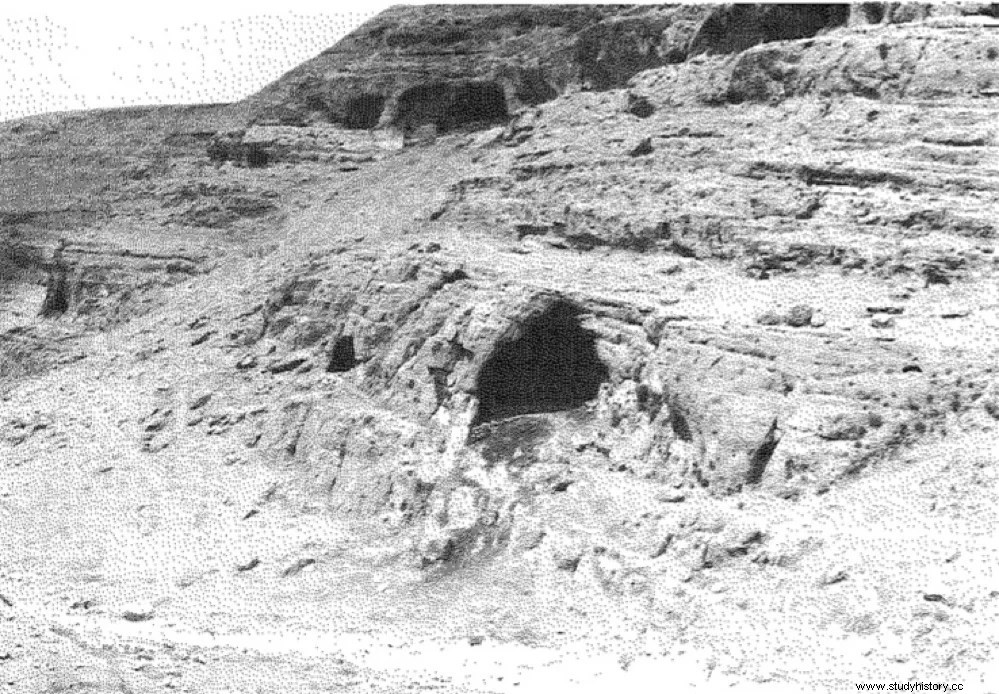Between 1928 and 1937 René Neuville was vice-consul of France in Jerusalem (between 1946 and 1952 he held the position of consul general). As well as a diplomat he was a prehistorian and archaeologist, he carried out various investigations in the area, such as the excavation of the Jebel Qafzeh cave near Nazareth, where in 1933 he discovered remains of several individuals from the Middle Paleolithic.
That same year of 1933 he was visiting a small museum in Bethlehem that showed different archaeological finds compiled by French priests, in the company of his friend Henri Breuil, the renowned archaeologist and prehistorian, when a small sculpture caught their attention.
They asked who had found it and were told that it was one of the Bedouin, in Wadi Khareitún, a rocky gorge about 10 kilometers long in the desert.

Neuville later wrote that it was Breuil who suggested to him that the piece might have come from a tomb or a cave.
For this reason (and several years later), he related it to the caves that he had been excavating since 1929, about 10 kilometers southeast of Bethlehem, in the Judean desert.
Neuville's excavations in the caves revealed that it was a Natufian site (considered the first farmers in history) used as a home, so the figurine must have had domestic use at the end of the Epipaleolithic.

However, although the area of origin of the figure is not in doubt, as is its Natufian character, today its association with caves remains unproven and is quite doubtful.
The piece remained in Neuville's possession until his death in 1952 and, in 1958, it was acquired at auction by the British Museum, where it was on public display (today it is no longer). 
It is made of a small block of calcite carved with a stone point, and shows the outline of two people embracing in the act of love, face to face and in a sitting position, although it lacks details such as the faces.
However, depending on the perspective adopted when viewing it, the figure can also appear to be breasts or even masculine or feminine attributes.
The heads, arms and legs are highlighted, with the arms of one figure hugging the shoulders of the other and their knees bent below. For this reason, it is considered the oldest representation of two people in the act of love.

What all experts agree on is that the figure is a work of intrinsic quality and artistic ingenuity , whose evident sexual character can symbolize a variety of spiritual concepts, be related to the cult of fertility, or simply be an artistic expression of primary aspects.
